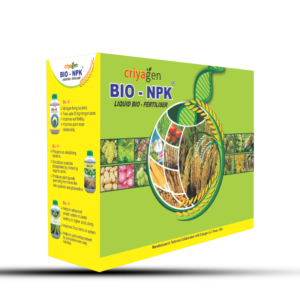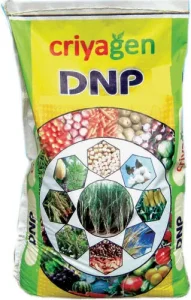In an age where health and sustainability are the top priorities, organically cultivating leafy green vegetables is not just a trend but a lifestyle change toward better health and environmental conservation.

Across the globe, and particularly in our country, green leafy vegetables like Fenugreek, spinach, Kela and Chaulai are celebrated for their rich nutritional profiles and versatility in various cuisines. These vegetables are more than just ingredients; they are powerhouses of protein, vitamins, iron, calcium, phosphorus, and fibre, essential for maintaining a healthy diet.
Ready to try organic kitchen farming with leafy greens? Then this post is for you, a step-by-step guide to kitchen farming with leafy vegetables.
1) Soil Selection
The journey of these leafy green vegetables begins with the choice of land. Loamy and clayey (Balui and Domat) soils, considered ideal for nurturing the lush, verdant leaves of these plants, adapt well to various soil types.
Evaluate the Soil Type
Loamy and Clayey Soil: Identify soils with a good mix of clay (Domat: Domat soil is also known as sikta, kariyal and dhanka in the North part of Indian) and sand (Balui). These soil types hold nutrients well and are ideal for leafy greens which require rich, well-drained soil.
pH Testing: Test the soil’s pH to ensure it falls within the range of 6.0 to 7.0, which is optimal for most leafy green vegetables. Adjust the pH if necessary using organic matter or lime.
If pH is low (acidic soil):
- Lime (Calcium carbonate or Dolomitic lime): Adding lime is the most common method to raise the pH of acidic soils. It neutralizes the acidity and raises the pH towards a more neutral level.
- Wood Ash: Contains potassium and raises soil pH. It should be used cautiously due to its quick-reacting nature.
If pH is high (alkaline soil):
- Sulfur: Applying elemental sulfur is the most common way to lower the pH of alkaline soils. Bacteria in the soil convert the sulfur to sulfuric acid, decreasing the pH.
- Organic Mulches: Using organic mulches like pine needles or peat moss can gradually acidify the soil as they decompose. They release organic acids, slowly lowering the pH.
Enhance Soil Structure and Fertility
Organic Matter Incorporation: Add well-rotted farmyard manure, compost, or green manure to increase the organic content. This improves soil structure, water retention, and microbial activity.
Regular Composting: Establish a routine of adding compost to maintain high levels of organic matter. Use locally available materials like crop residues, animal manure, or kitchen waste.
Nutrient Management
Soil Testing: Conduct soil tests to determine nutrient levels and deficiencies. This helps in creating a tailored nutrient management plan.
- Leafy green vegetables need a lot of nitrogen to grow well. If there is not enough nitrogen in the soil, the plants will start to grow but then they will stop growing after a stage. Nitrogen helps the plants grow quickly and healthily. Soil testing helps us understand the level of Nitrogen, and pH level (ideally it should be 6 to 6.8).
Organic Fertilizers: Use organic fertilizers like composted cow dung, bone meal, or fish emulsion to provide a balanced supply of nutrients. Avoid synthetic fertilizers to maintain organic integrity. Instead of synthetic, it’s good to use biofertilizers.
Soil Quality and Pest Control
Mulching: Apply organic mulches like straw, hay, or leaves to suppress weeds, retain soil moisture, and add nutrients as they decompose.
Crop Rotation: Rotate crops to prevent soil-borne diseases and pest buildup. This also helps in maintaining soil fertility.
- Legumes (Beans, Peas, Lentils): Legumes are an excellent choice because they have the unique ability to fix atmospheric nitrogen, enriching the soil for the next crop. This makes them particularly beneficial after nitrogen-hungry leafy greens.
- Root Crops (Carrots, Beets, Radishes): Root crops help break up the soil and utilize different soil nutrients compared to leafy greens. They can also help disrupt the life cycles of certain pests and diseases associated with leafy vegetables.
2) Selection of Varieties
Selecting the right variety of greens is crucial for successful cultivation.
- Popular varieties like ‘Early Smooth leaf’ and ‘Virginia Savoy’ for spinach.
- ‘All green’, ‘Pusa Palak’, ‘Jobner green’, ‘Ooty 1’ and ‘Arka Anupama’ for palak.
- ‘RMT-1’ ‘Gujarat Methi 1’, ‘Rajendra Kanti’ and ‘Pratap Rajasthan Methi (PRM 45)’ for fenugreek (methi).
Regional varieties of chaulai are tailored to specific climates and soil conditions, offering better yield and disease resistance. By choosing appropriate varieties, organic farmers can ensure a more resilient and productive crop.
3) Organic Manures and Fertilizers in Leafy Green Cultivation
For organic farmers, the application of manures and fertilizers is a critical step in ensuring the healthy growth of leafy green vegetables. Now we will look into the practices of incorporating organic manures and fertilizers, specifically tailored to the needs of sustainable agriculture. Below are detailed strategies and considerations for the effective use of organic inputs:
Types of Organic Manures
Farmyard Manure (FYM)
Well-rotted dung from cows, buffaloes, or other livestock is a traditional and effective organic manure. It should be decomposed for at least 3-6 months before application.
Compost
We can compost kitchen waste, crop residues, and other organic materials into nutrient-rich humus. Make sure the compost is fully decomposed and free from pathogens and weed seeds.
Green Manure
Incorporating leguminous crops like clover, alfalfa, or fenugreek directly into the soil can enrich it with nitrogen and organic matter.
Bio Fertilizers
Biofertilizers are a pivotal component in sustainable agriculture, consisting of substances teeming with beneficial microbes. These microbes, including mycorrhizal fungi, blue-green algae, and various bacteria, play a crucial role in bolstering plant growth. They achieve this by augmenting the availability of vital nutrients to plants, thereby fostering healthier and more robust growth. This natural approach to enhancing plant health is not only environmentally friendly but also contributes significantly to the improved vitality of plants and trees.
Criyagen Zen Biofertilizer
Zen biofertilizer offers versatile application methods: soil application, drenching, and drip irrigation. For soil application, combine it with NPK or other organic fertilizers (50 kg) during sowing or topdressing. Drenching involves mixing granules with a specific quantity of water, letting it sit overnight, then diluting and applying near the root zone. In drip irrigation, follow drenching steps and apply through the drip system.

Bio NPK is suitable for both soil and drip application. Mix 3 litres of Bio-NPK with 50 kg of vermicompost/FYM for soil application, spreading it over one-acre pre-sowing. For drip application, blend 3 litres of Bio-NPK in 100 litres of water and apply via drip irrigation.

DNP is a unique organic manure containing organic carbon, boosters, trace minerals, and Agriculturally Important Microorganisms (AIMs). Apply 50-100 kg of DNP per acre during planting and 50 kg of DNP at 45-125 days after planting for soil application. DNP is recommended at 2 bags/acre for short-duration crops.
How to Apply Fertilizers
Farmyard Manure: Apply 100 quintals (10,000 kg) of well-rotted FYM per hectare during the initial ploughing. This application should ideally be done a few weeks before planting to allow for proper integration and decomposition in the soil.
Nitrogen and Potash: Adjust the application of nitrogen and potash based on soil tests. Typically, 25 kg of nitrogen (N) and 40 kg of potash (K2O) per hectare are recommended. These can be sourced from organic supplements like bone meal for nitrogen and wood ash for potash.
Incorporation Techniques
Even Distribution: Spread the manure and fertilizers evenly across the field before ploughing. This ensures a uniform distribution of nutrients.
Deep Incorporation: Mix the manure and fertilizers into the soil through deep ploughing. This helps in better root contact and prevents nutrient runoff.
Monitoring Soil Health
“Our planet and humanity are basically supported by a 10-30 centimeter layer of soil, and it is our most precious resource.”
-Svein Tore Holsether
CEO of Yara International
After the application of fertilizers, it’s imperative to regularly monitor soil health, especially during the initial days. This vigilance is crucial as over-fertilization can lead to detrimental consequences such as water pollution, nutrient leaching, and irreversible damage to aquatic life. Conducting a simple soil test can avert these negative environmental impacts.
Moreover, applying fertilizer without precise knowledge of the soil’s nutrient requirements often results in over-fertilization. Excessive use of fertilizers is not only harmful to the environment but can also cause ‘fertilizer burn’ to crops, impeding their growth. Observationally, it’s important to be alert for signs of nutrient deficiencies or excesses in plants. These signs are key indicators for the need to adjust manure and fertilizer applications, ensuring optimal plant health and environmental safety.
Pre-Sowing Irrigation: Water the field before sowing to ensure the soil is adequately moist.
Post-Sowing Irrigation: Avoid heavy irrigation immediately after sowing; light sprinkling may be necessary depending on the soil moisture.
Regular Irrigation: Thereafter, irrigate as per the crop’s growth stage and weather conditions, ensuring that the plants receive consistent moisture but are not overwatered.
4) Organic Pest and Disease Management: Protecting Greens Organically
The sowing method for leafy green vegetables is a critical step in the cultivation process, determining plant density, growth, and ultimately the yield and quality of the crop. Below are the detailed, optimized sowing methods tailored for various types of leafy greens, along with considerations for soil preparation, weed control, irrigation, and harvesting.

Pests
Leaf Miners: If you notice any sign of trails they leave behind on the leaves then it’s a leaf miner infestation. Leaf miners can attack various vegetable crops, including leafy greens such as spinach, lettuce, and chard.
Management: A foliar spray of 3ml of Beauveria bassiana will control the leaf miners on the leafy vegetables. Next foliar spray of 3 ml of neem oil can reduce leaf miner infestation.
Aphids: If you see any soft body insects that feed on the sap of plants then it will be aphids. They are commonly found on a wide range of plants, including vegetables, fruits, and ornamental plants.
Management: A foliar spray of 3ml of Beauveria bassiana will control the aphids on the leafy vegetables.
Next foliar spray of 3 ml of neem oil can reduce aphid infestation.
Whiteflies : If you notice black sooty mould on the leaves then there will be an infestation of whiteflies which secretes the honeydew and leads to sooty mould formation. They feed on the sap of the plant, which can cause the leaves to turn yellow and wilt. Severe infestations can cause the leaves to fall off prematurely.
Management : Foliar spray of 3ml of Beauveria bassiana will control the aphids on the leafy vegetables. Next foliar spray of 3 ml of neem oil can reduce whiteflies infestation.
Diseases
Alternaria leaf spot: If you notice black or brown spots on the leaves which will form in concentric form, then it will be Alternaria leaf spot. The most common disease in leafy vegetables.
Management: Foliar spray of 1 litre of Pseudomonas fluorescence in 50 litres of water.
Damping off and Root Rot: If you notice water-soaked lesions on the upper part of the root then it will be damping off and in severe cases, it will be root rot in the germination stage.
Management: Seedling (Root Dipping) Mix 1 litre of Trichoderma viride in 10 litres of water, and keep the seedling roots in immersed condition for 30 minutes.
White rust: If you notice yellow spots and white glassy pustules under the leaves then it is an initial stage of white rust disease. In advanced stages, white pustules spread to the upper part of the leaves.
Management: Foliar spray of 1 litre of Trichoderma viride in 50 litres of water.
5) Harvesting leafy green vegetables
First Harvest: Typically, the first harvest for leafy greens like spinach and methi can be expected 25-30 days after sowing, depending on the variety and growing conditions.
Subsequent Harvests: Continue harvesting every 15-20 days as the plants regrow leaves. Ensure that the harvesting method is gentle to avoid damaging the plant base.
By adhering to these optimized sowing methods and additional cultivation practices, organic farmers can significantly enhance the growth and yield of their leafy green vegetables.
These practices not only contribute to a successful harvest but also ensure that the cultivation process aligns with sustainable and organic farming principles, promoting a healthy ecosystem and nutritious, high-quality produce.

In summary, cultivating leafy green vegetables through organic farming is a rewarding endeavour that yields nutritious and flavorful produce while contributing positively to environmental health. By understanding the specific needs of different green vegetables, carefully managing soil health, and using organic cultivation practices, farmers can enjoy bountiful harvests of these essential dietary staples. The result is not just delicious and healthy food but also a sustainable and ecologically sound farming practice that benefits both the consumer and the planet.